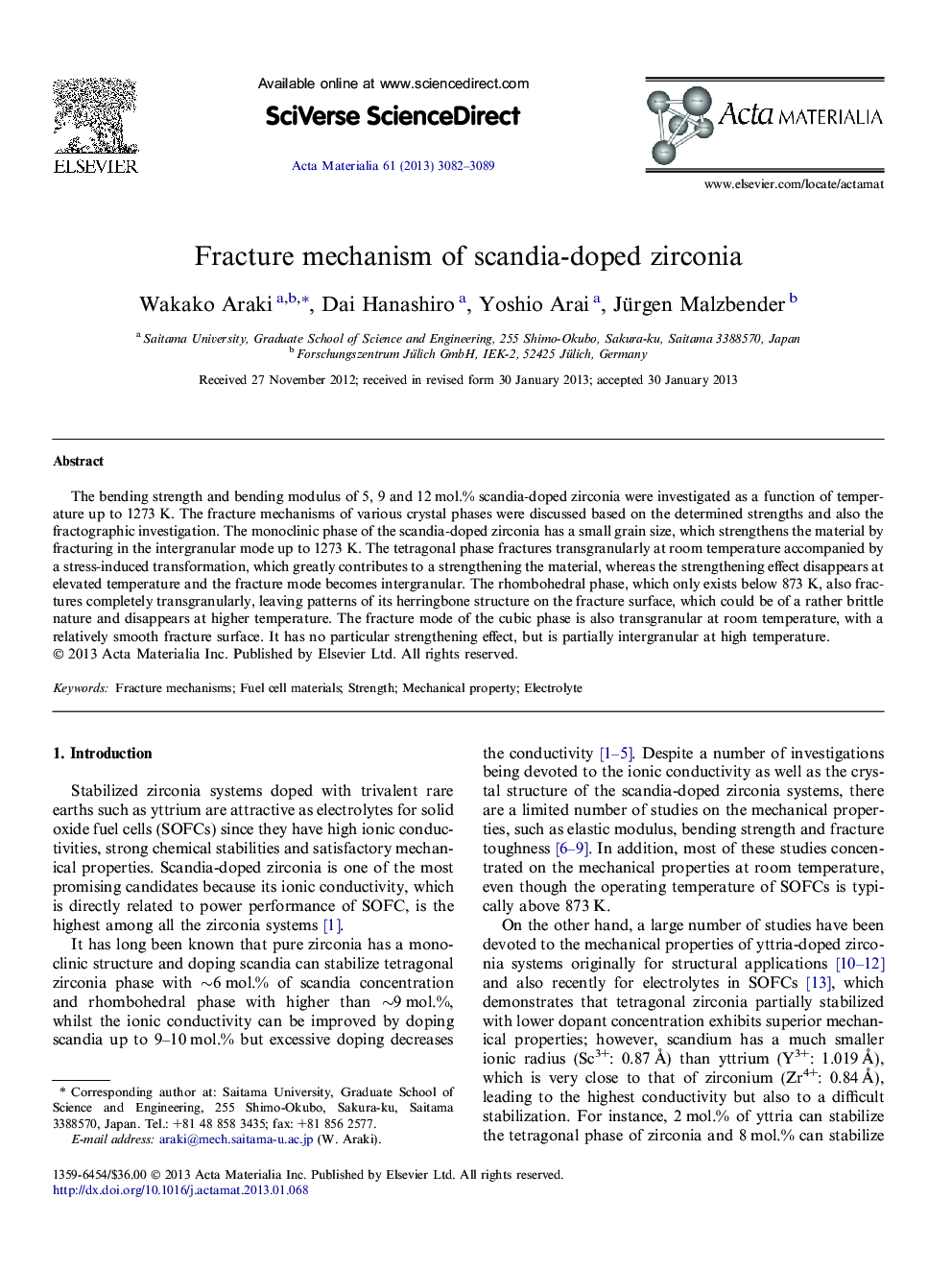| Article ID | Journal | Published Year | Pages | File Type |
|---|---|---|---|---|
| 10620295 | Acta Materialia | 2013 | 8 Pages |
Abstract
The bending strength and bending modulus of 5, 9 and 12Â mol.% scandia-doped zirconia were investigated as a function of temperature up to 1273Â K. The fracture mechanisms of various crystal phases were discussed based on the determined strengths and also the fractographic investigation. The monoclinic phase of the scandia-doped zirconia has a small grain size, which strengthens the material by fracturing in the intergranular mode up to 1273Â K. The tetragonal phase fractures transgranularly at room temperature accompanied by a stress-induced transformation, which greatly contributes to a strengthening the material, whereas the strengthening effect disappears at elevated temperature and the fracture mode becomes intergranular. The rhombohedral phase, which only exists below 873Â K, also fractures completely transgranularly, leaving patterns of its herringbone structure on the fracture surface, which could be of a rather brittle nature and disappears at higher temperature. The fracture mode of the cubic phase is also transgranular at room temperature, with a relatively smooth fracture surface. It has no particular strengthening effect, but is partially intergranular at high temperature.
Related Topics
Physical Sciences and Engineering
Materials Science
Ceramics and Composites
Authors
Wakako Araki, Dai Hanashiro, Yoshio Arai, Jürgen Malzbender,
